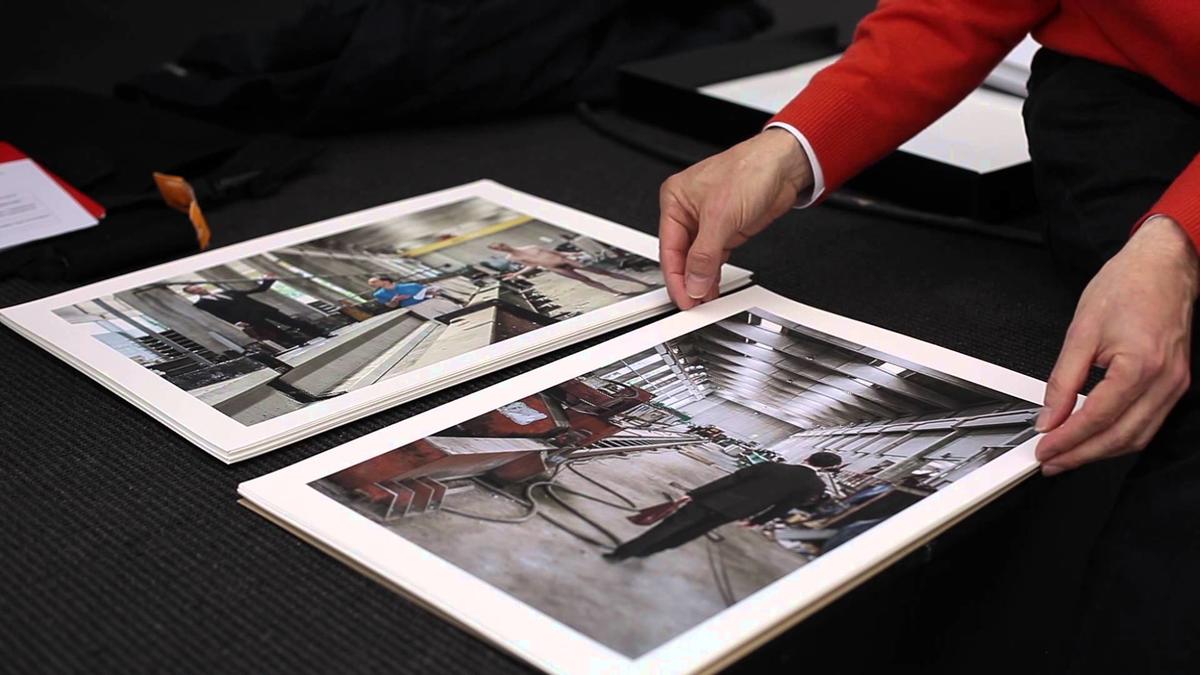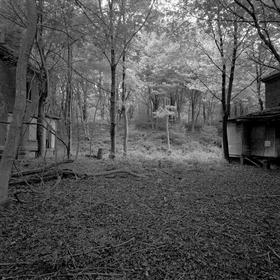Looking at Photographs

There is an art and a discipline to looking at a portfolio of someone's photographs.
Coming to my studio to look at my work:
Sitting across the table or side by side with a portfolio in front of us, the box is opened and the first print exposed. The light is the right color temperature and there is no glare. It is quiet and peaceful, unlike a large scale portfolio review which is chaotic.
A one-paragraph description of coming to my studio to look at prints:
You arrive, access is easy and parking no problem. I greet you. We exchange pleasantries. I take your coat. I offer you a water or an espresso. We settle in. I ask you what you'd like to see. You tell me. I go and find it, the portfolio sitting on a shelf behind us or in a flat file case. I place it on the viewing table, with good balanced light on above us and open the portfolio. There may be a cover statement, a title page, or there may not be. We begin to look at the prints, arranged sequentially and sitting in a short stack, sliding one print to the side, looking, then sliding another one and so on. Time tends to fold in on itself, the world compressing down into this other world contained in the prints we are looking at. Clearly, the pictures are taking us on some sort of journey, there is a progression. We are taken in by these pictures where the white border around each print constitutes a frame into this place in the prints before us, containing depth and clarity and revealing details you might not notice were you there in front of the real thing, in the actual place. As we finish you may become aware of sounds or distractions you had not noticed when you arrived as your attention comes back to where we are and what we were doing is now a recent memory. You may choose to look at other works and this means the process will repeat, or you may not. Let's be clear, this takes effort, attention to many aspects of the experience. I advise not looking at too much. We talk a little. We can range off topic or relate an anecdote about the place or circumstance we've just looked at, the art we've just seen. Or we can discuss characteristics about photography itself as it relates to these photographs we've just seen. We finish and I thank you for coming. You leave.
If I am showing my work to someone else I find such a clear benefit. I learn so much for I see my work through the viewers' eyes. My photographs are often looked at by people I do not know or have just met and can be portfolios I haven't seen for years. So looking at the prints can become a rediscovery for me. Of course, I see flaws through their eyes too, now that I see the work with this perspective. This can cause me to re-edit works occasionally or, rarely, to reprint.
But the discipline of looking at an artist's work like this carries with it various protocols, precedents and traditions. This is true when someone looks at your work and also if you show your work to someone else.
First is, to be involved, to be tuned in, to look. Being distracted, inattentive and lacking in concentration diminishes the work and disrespects the person that made it. This is a trust: "I am showing you work I am invested in and have worked very hard to make. I am counting on you to be respectful, appreciative and attentive."
Try not to talk about things that don't relate to the work before you. Telling stories, making jokes and carrying on as the prints slide by your eyes is distracting. Presumably, your phone is turned off.
It is helpful when about to view someone's work that you do your homework. This means that if it is possible, research the person. Look over their website. Is it current and active or lurking in mothballs, never updated and archaic? Are there other sites that speak to the person you are going to see? Books, perhaps or show reviews?
Is it okay to be critical here? Of course, particularly if you are showing to someone experienced, you should expect a reviewer to offer suggestions for improvement. If you are reviewing someone's portfolio tread lightly, some positive reinforcement is good along with constructive criticism. It is also appropriate to place someone within their level of experience, meaning that we wouldn't talk the same way to someone 22 with 6 months into it and someone 63 with their whole career behind them.
Seeing someone's photography one-on-one is an honor, whatever their level and experience. They are sharing with you part of their lives and experience, their aesthetic, their craft and creative motivation. It is best to be observant, attentive and respectful.
Want to show me your work for a review? Contact me here. Please note: I only review work face to face.

